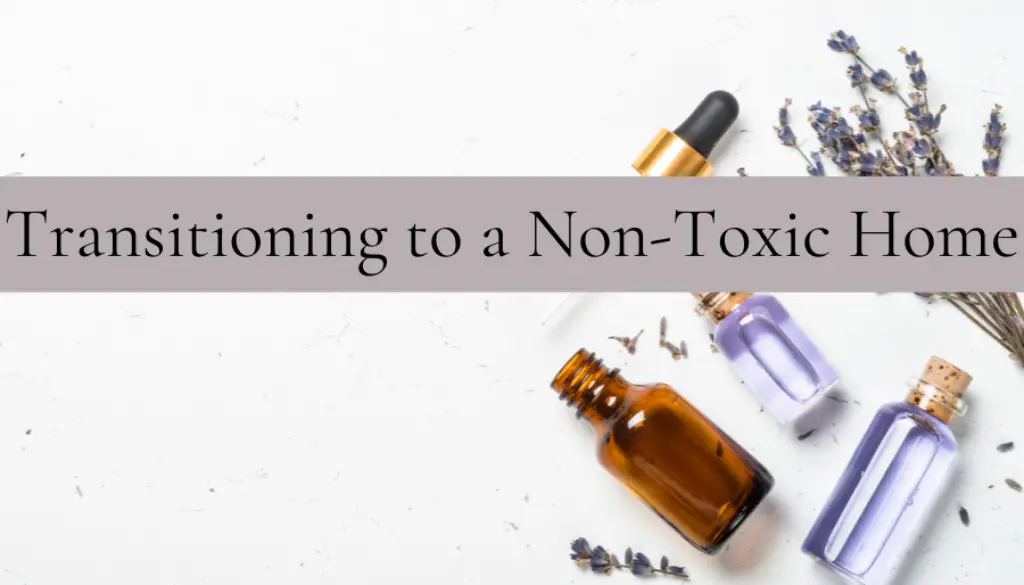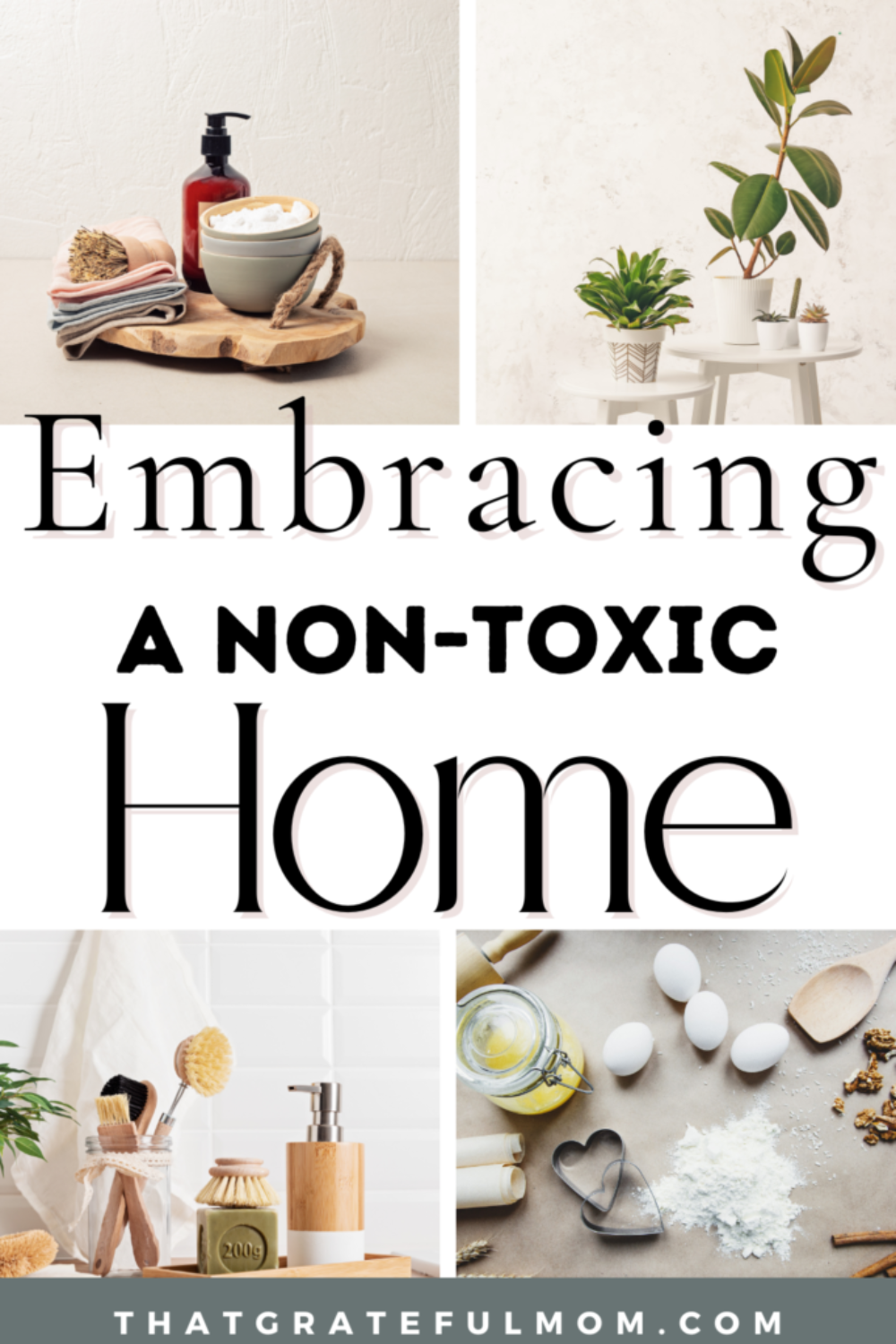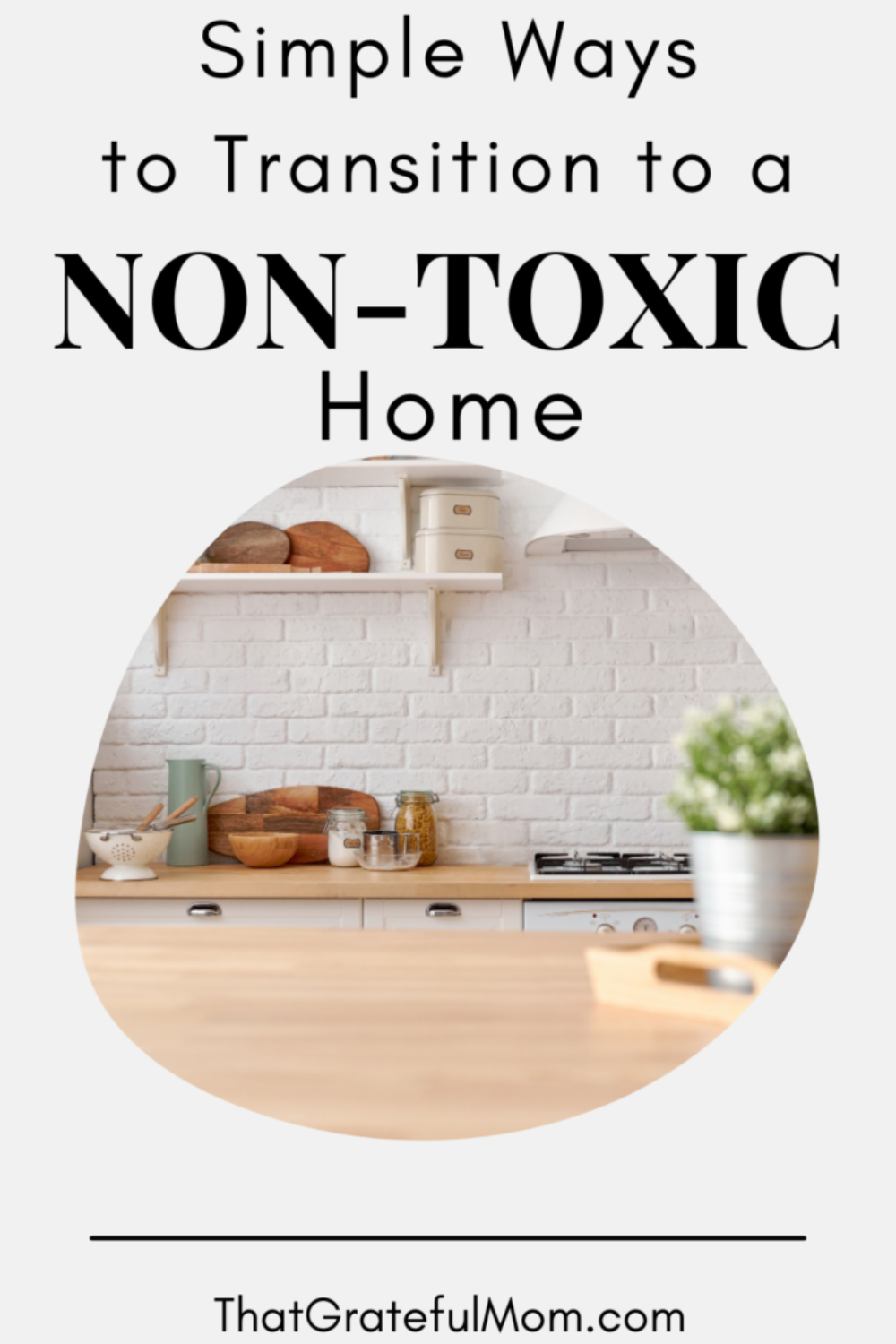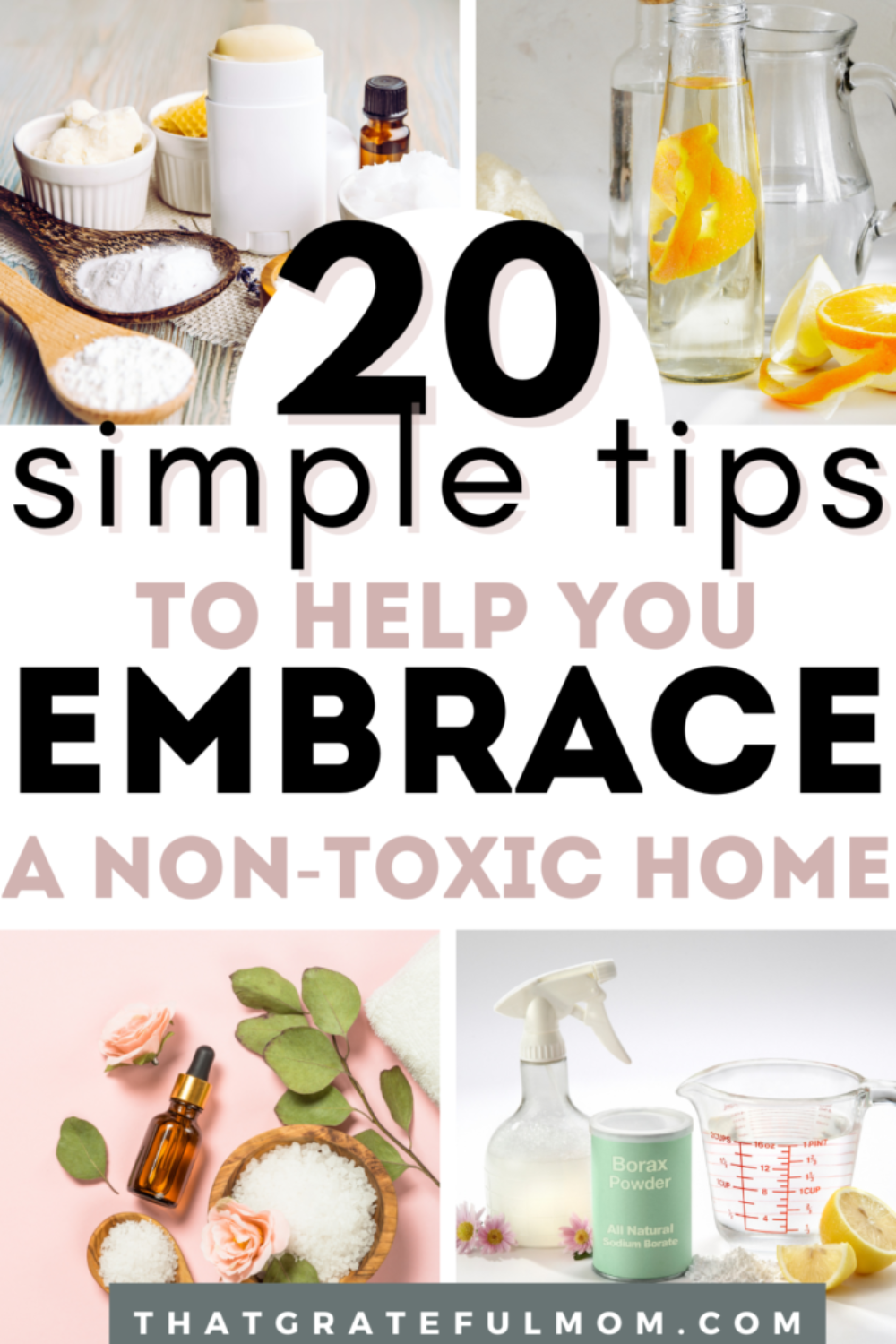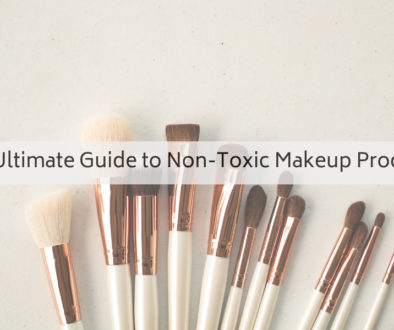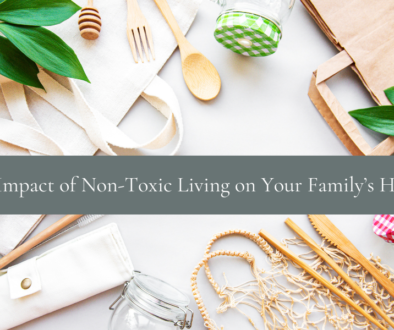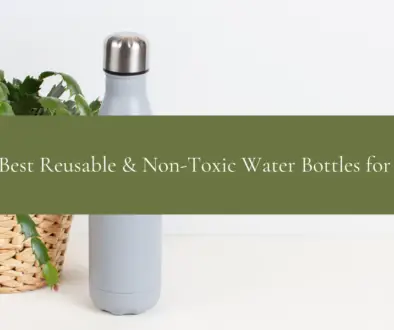Transitioning to a Non-Toxic Home: A Simple How-to Guide
When transitioning to a non-toxic home, it’s easy to feel overwhelmed figuring out where to start and how to choose natural products. That’s exactly what I’m sharing today! This post will cover easy ways to swap out conventional products for safer options and reduce the harmful toxins in your home.
I started my non-toxic journey in 2018 when our 4-year-old son was diagnosed with a rare form of cancer. With no prior history of cancer in our family and providers unable to tell us what caused our cancer, I knew I needed to do some digging.
What I learned shocked me.
The Environmental Working Group shared that the average woman is exposed to over 160 chemicals before walking out her front door.
Cancer rates have only risen in the last 5 decades, with nearly half of all adults receiving a diagnosis in their lifetime.
With the increase in toxic chemicals in products available to us today, it’s no wonder that cancer rates, respiratory issues, and endocrine disruption have drastically increased in the last 50 years.
While there is no such thing as ‘toxin-free,’ reducing exposure to harmful chemicals and arming yourself with information on non-toxic alternatives are excellent ways to protect yourself and your family.
transitioning to a non-toxic home
If you’re new to the non-toxic lifestyle and don’t know where to start, I have good news! this post will walk you through everything you need to know to embrace a healthy lifestyle. I’ve shared tips room by room on my blog, teaching you how to choose non-toxic products and what to look for. If you’re looking for most posts to help with transitioning to a non-toxic home, the following links will help!
8 Affordable Ways to Create a Non-Toxic Home
Free and Simple Ways to Make Your Bedroom Healthier
How can I transition to a non-toxic home?
Understanding non-toxic living
What you consider non-toxic may differ from others, and that’s okay. You need to know what you’re comfortable allowing in your home and what you want to focus on most.
Here are some of the unsafe chemicals we try to avoid in our home:
- Excessive plastic
- Synthetic perfume
- Food dyes
- Heavy metals
- PFAS
- Pesticides
- Formaldehyde
- Volatile organic compounds
- Synthetic chemicals
This list is not exhaustive, but I have worked in the past few years to change the way we care for our home and bodies. The impact these toxins have on our bodies is astounding, and there are little to no regulations or bans on using them in household products in the US. As of 2019, Europe has banned more than 1,300 chemicals, whereas the US has only banned 11. It’s frustrating, to say the least, and as consumers, we bear the responsibility of researching the harmful side effects of exposing ourselves to these substances. It is crucial to choose safer products with natural ingredients to help protect your health.
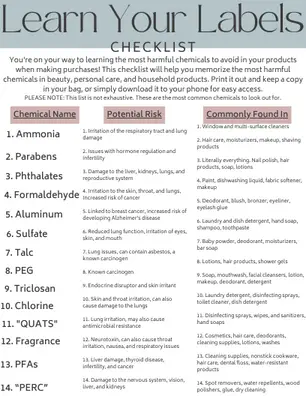
Want a FREE copy of this checklist to print or keep on your phone? Click here to join my email list, and I’ll send you a copy!
Assessing your current living environment
The first step when transitioning to a non-toxic home is to assess where you’re at currently and set goals to replace harmful products with safer alternatives. If you’re just getting started on your non-toxic journey, there are a few ways to evaluate your current environment. You can either go room by room and list products you want to research or start with personal care, household cleaning products, household care, or food.
Potential sources of toxins in your daily life
Here are important areas to research potential sources of toxins:
- Household cleaners
- Personal care products
- Laundry care
- Yard maintenance
- Food
- Furniture
- Flooring
- Cookware and bakeware
Room-by-room suggestions
Kitchen
Utensils– Ditch the plastic utensils and opt for wood or silicone.
Cookware-swap nonstick for stainless steel, cast iron, and ceramic.
Bakeware– Glass and stainless steel are excellent options for avoiding unnecessary harm.
Water– Research whole home and sink filters to filter out harsh chemicals in our water supply.
Food– Consider produce from the Dirty Dozen and Clean Fifteen lists when shopping for food. Organic grains, dairy, and meat are important, too, but prioritize what fits your budget.
Bathroom
Air fresheners– Many air fresheners are filled with synthetic fragrances. Consider using alternatives like essential oils or natural scents.
Cleaning supplies– We now clean our home with just 4 non-toxic cleaning products and dilute them depending on the task. We have saved money and reduced our exposure to harmful chemicals dramatically! Consider swapping out your harsh chemicals for products like baking soda, vinegar, and castile soap. You can learn more about how we clean our home and the ingredients we use here!
Personal care products– I love using EWG and Think Dirty when researching safer brands for personal care products. They share the potentially harmful ingredients and risks you may face with long-term exposure.
Laundry room
Detergent– Last year, I started making laundry detergent from scratch, and I’ve never purchased store-bought detergent again! It’s cheaper, works well, and there’s no harsh perfumes or chemicals. I got tired of purchasing overpriced detergent that didn’t work, so I made my own. I don’t have to worry about exposing our kids to toxins and pay about 65% less per load.
Stain remover– Like laundry detergent, stain remover is filled with toxins to help remove stains from clothes. I now make it myself and no longer worry about what I’m spraying on our clothes!
Bedrooms
Furniture– A lot of furniture is sprayed with flame retardants to help prevent them from catching fire. Unfortunately, these chemicals are toxic to humans and cause issues like respiratory upset and cancer. The best way to know if your furniture has these chemicals is to check for a warning label. When shopping for furniture, most companies make it easy to contact the manufacturer with questions about potential exposure.
Bedding– Like furniture, some bedding contains flame-retardant chemicals as well. The safest and easiest way to avoid this is to purchase organic bedding.
Whole home
Air– Our air quality constantly changes, but indoor air pollution is a real concern as it can be 20 times more toxic than outdoor air because of harsh chemicals in our homes, personal care products, plastics, dust, dirt, and viruses. The best alternative is an air purifier if you cannot open your windows throughout the day due to weather or other issues. There are endless options online, but here are a few great brands:
PuroAir– For up to 1,100 SF
AroEve– For up to 200 SF
Outside
Pest control– Many local pest control companies offer alternatives that are safe for pets and children. When booking an appointment, ask for an ingredient list to see what they would be spraying around your home. If you’re not comfortable with anything or if they say they cannot provide a list, move on to another company. It is not hard for companies to provide transparency.
Weed control– It may seem appealing to have a lush, green lawn, but at what cost? Roundup has been directly linked to cancer, and most other weed control brands contain the same ingredient. Instead, use a non-toxic alternative containing vinegar that won’t harm your family or outdoor critters.
Here’s the recipe we use:
4 cups vinegar
1/2 cup salt
2 tsp. dish soap
pour in pump action bottle, shake well, and spray on weeds. Repeat 24 hours later for stubborn weeds.
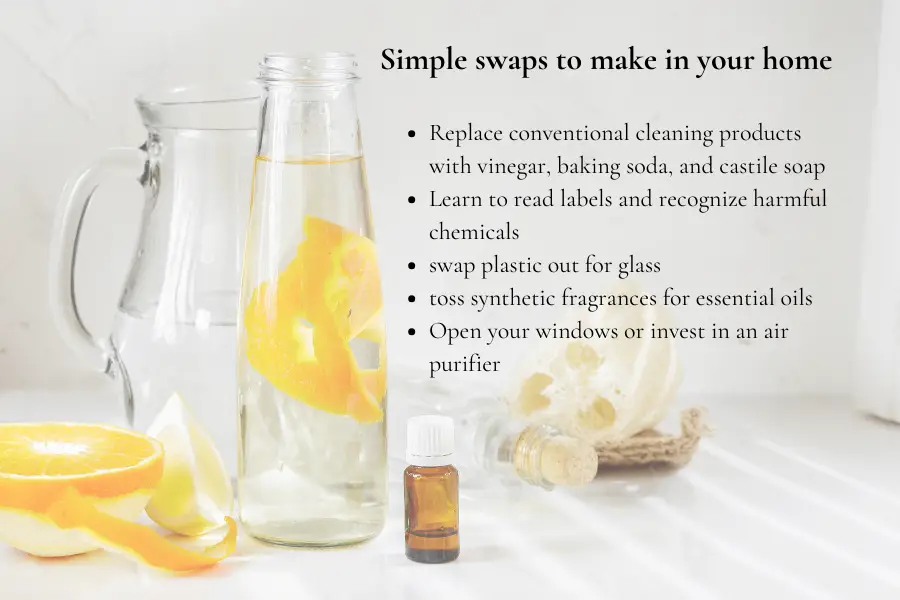
Creating a plan to transition to a non-toxic home
I want to encourage you to take this process slowly! This does not need to be an overnight change. That’s expensive and stressful, to say the least. I know because this is exactly what I tried to do. After my son was diagnosed with cancer, I went into research mode. I wasn’t satisfied with providers trying to tell me that his diagnosis was just ‘bad luck.’ Out of fear, I threw everything out and started from scratch, racking up debt in the process.
By making this a gradual transition through simple changes, you’ll have time to research alternatives, budget for new items, and save yourself the headache of trying to do it all at once.
Set realistic goals to reach by choosing one product at a time to replace. You can do this weekly, every other week, monthly, etc. Whatever works for you, choose a goal, and stick to it.
Finding like-minded families
Transitioning to a non-toxic home can feel overwhelming, especially when you don’t have supportive people to connect with. Finding like-minded people who have similar goals will keep you motivated and help you learn about safer alternatives to the brands you’re currently using. Social media has been a great way for me to find other families like ours. Our family doesn’t have the same mindset as us, which is totally fine, but it’s nice to find people who understand the struggle and have similar goals.
Staying motivated
Transitioning to a non-toxic home has its challenges. That’s why creating goals and sticking to them is so important. Finding people with similar goals and celebrating milestones are excellent ways to stay motivated and focused on the end goal.
Speaking of the end goal, remember to set one! There is no such thing as toxin-free. Remember that. While it’s great to want to clean up your home and choose safer alternatives, setting a firm boundary of how much research to do and how many products to replace is just as important. The non-toxic community tends to get a bad rap for its all-or-nothing mentality. Let me be the first to tell you that it’s okay to skip that and feel good about the changes you’ve made!
Final thoughts
So, what are we going to do? We’re going to set goals, research alternatives for our favorite brands, and let go of the rest! What we’re not going to do is feel like it’s never enough or make changes from a place of fear. Both of these habits are dangerous and only ask for trouble. Be proud of your changes, find a community of like-minded people, and go about your day. Transitioning to a non-toxic home is a marathon, not a sprint. It’s okay if you’re not the first to the finish line. Your family’s health is worth the effort, but the last thing you should do is stress over how quickly you need to make changes. Small steps are effective and manageable!
As always, let me know in the comments what you think, and feel free to ask any questions!
Thanks for reading!
This site may contain links to affiliate websites including Amazon. I may receive an affiliate commission for any purchases made by you through Amazon or other potential affiliates and no additional cost to you. Thank you for your support.

